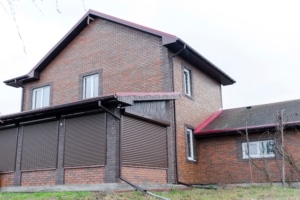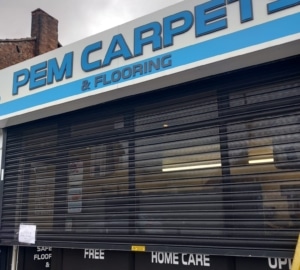Roller shutters are one of the most versatile security and convenience solutions on the market. Whether you own a busy high street shop in Manchester, a warehouse on the outskirts of Birmingham, or a semi-detached home in Aberdeen, roller shutters provide a simple way to improve safety, privacy, and comfort.
But not all roller shutters are created equal. Domestic roller shutters and commercial roller shutters may look similar at first glance, yet they are designed with very different needs in mind. Understanding the key differences will help you choose the right product for your property, ensure compliance with UK standards, and get the best long-term value.
Purpose and Primary Use
The first major difference lies in what each type of shutter is designed to achieve.

Domestic roller shutters are mainly intended for homes. Their primary roles are improving security, blocking out light, reducing noise, and providing insulation. Many homeowners install them on windows, conservatories, or patio doors to protect against break-ins while also enjoying benefits like improved energy efficiency and increased privacy.

Commercial roller shutters, on the other hand, are built for businesses. They are most often installed over shopfronts, warehouses, storage units, and industrial facilities. Here, the focus is on robust security, asset protection, and ensuring business continuity. For example, a high street jeweller might need heavy-duty shutters to deter break-ins, while a supermarket may require fire-rated shutters to meet UK safety regulations.
Strength and Durability
Another defining difference is construction quality and strength.
Domestic shutters are usually lighter in build. While they’re made from durable materials such as aluminium or steel, they don’t need to withstand the same level of daily wear and tear as their commercial counterparts. Their design balances strength with aesthetics, ensuring they don’t look out of place on a residential property.
Commercial shutters are typically much heavier and more robust. They’re designed to cope with constant use and higher risk levels. For example, shutters used on a busy Manchester convenience store may be opened and closed multiple times a day, so the materials, mechanics, and locking systems are reinforced to handle that stress.
Design and Aesthetics
Looks matter more for homes than businesses, which is why domestic shutters tend to be designed with aesthetics in mind.
Domestic shutters often come in a variety of colours and finishes, allowing homeowners to match them with their property style. Slimline designs are common, ensuring shutters don’t dominate the look of the house. Some are even integrated within window frames for a subtle appearance.
Commercial shutters prioritise functionality over looks. Most are plain steel or aluminium, designed to cover large shopfronts or industrial doors. While powder coating and custom branding are available, appearance is usually secondary to strength, fire resistance, or insurance compliance.
Operation: Manual vs Automatic
Operation is another point of difference.
Domestic shutters are often manually operated, using a simple crank or pull system. However, many UK homeowners now opt for electric shutters that integrate with smart home technology. For example, shutters can be programmed to lower at sunset for improved privacy and security.
Commercial shutters are far more likely to be electric or motorised as standard. Businesses need speed and efficiency, especially where shutters are large and heavy. Automatic operation also improves staff safety and ensures shutters can be linked with fire alarms or access control systems.
Security Features
Security is critical for both types, but commercial shutters are built to a higher standard.
Domestic shutters provide excellent protection against opportunistic burglars. They create a visible deterrent, make forced entry more difficult, and provide peace of mind for homeowners who are often away.
Commercial shutters are often tested against UK standards such as LPS 1175 for intruder resistance. They may include reinforced locking bars, anti-lift devices, and high-security profiles. Some sectors, like finance or pharmaceuticals, are required by insurers to use shutters of a specific grade.
Fire and Safety Compliance
A particularly important difference comes from regulations.
Domestic shutters usually don’t require fire ratings, although insulated models are common to meet energy efficiency needs.
Commercial shutters often must meet UK fire safety laws. Fire-rated shutters are designed to contain flames and smoke for a set period, protecting escape routes and complying with building regulations. Many large UK businesses use them to separate warehouse sections or protect staff areas.
Cost Considerations
Unsurprisingly, cost varies depending on type, size, and features.
Domestic shutters are typically more affordable, with prices reflecting smaller dimensions and lighter construction. Installation is usually quick and straightforward.
Commercial shutters are a bigger investment. Costs increase with larger openings, reinforced designs, and compliance features like fire resistance. However, for businesses, the expense is justified by the protection of valuable stock and the ability to meet insurer requirements.
Installation and Maintenance
Domestic shutters are relatively easy to install and maintain. Annual servicing is usually enough to keep them working smoothly.
Commercial shutters require professional installation, especially for motorised and fire-rated models. Regular servicing is essential—some businesses even set up quarterly checks to ensure shutters comply with health and safety obligations.
When deciding between domestic and commercial roller shutters, it’s important to consider the purpose, security needs, regulations, and aesthetics of your property.
If you’re a homeowner in the UK, domestic shutters offer a cost-effective way to boost security, reduce noise, and improve comfort.
If you run a business, commercial shutters provide the level of strength, compliance, and protection you need to safeguard staff, stock, and premises.
At the end of the day, both types serve the same broad purpose keeping people and property safe. But by understanding the differences, you can make an informed choice that delivers lasting peace of mind.

